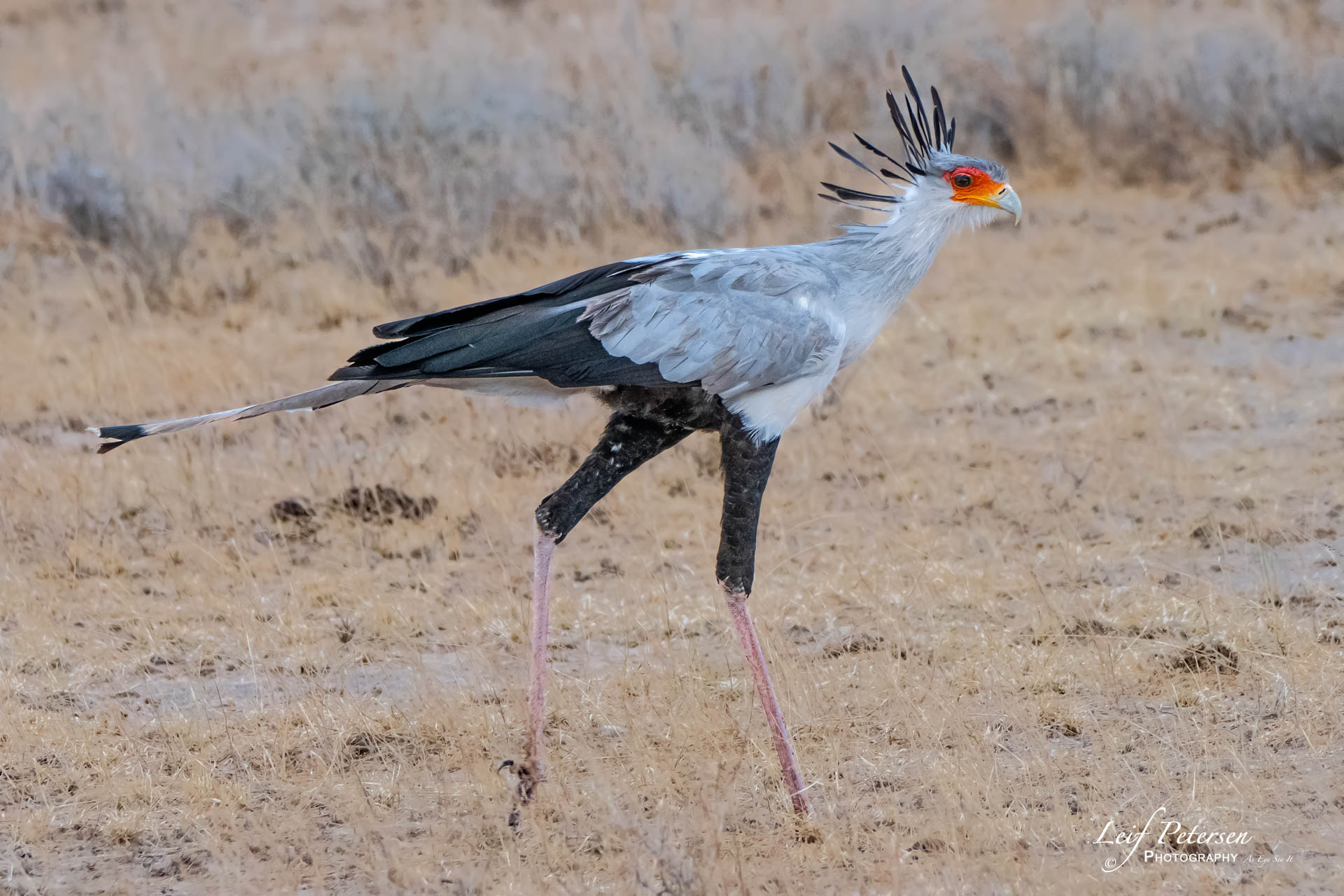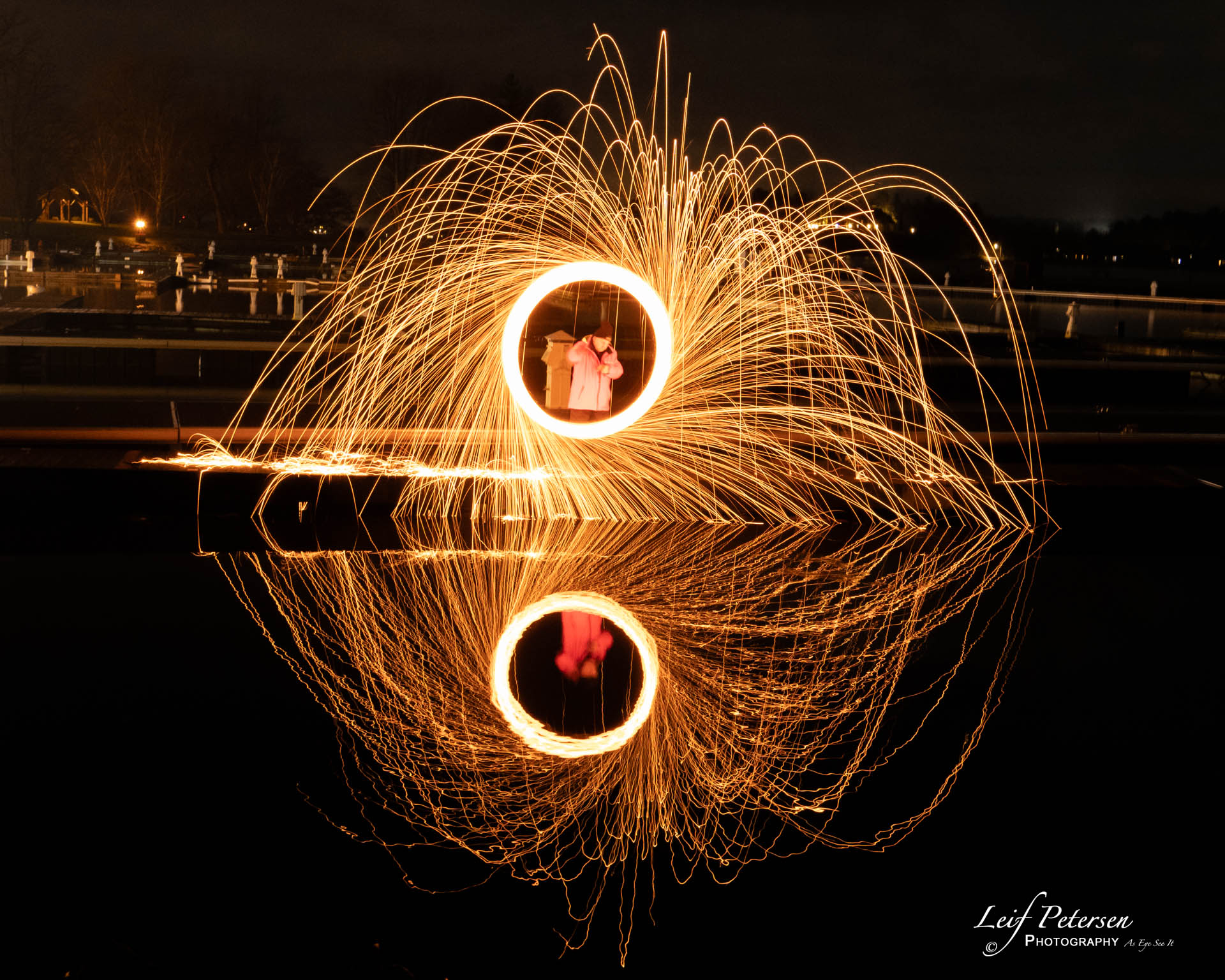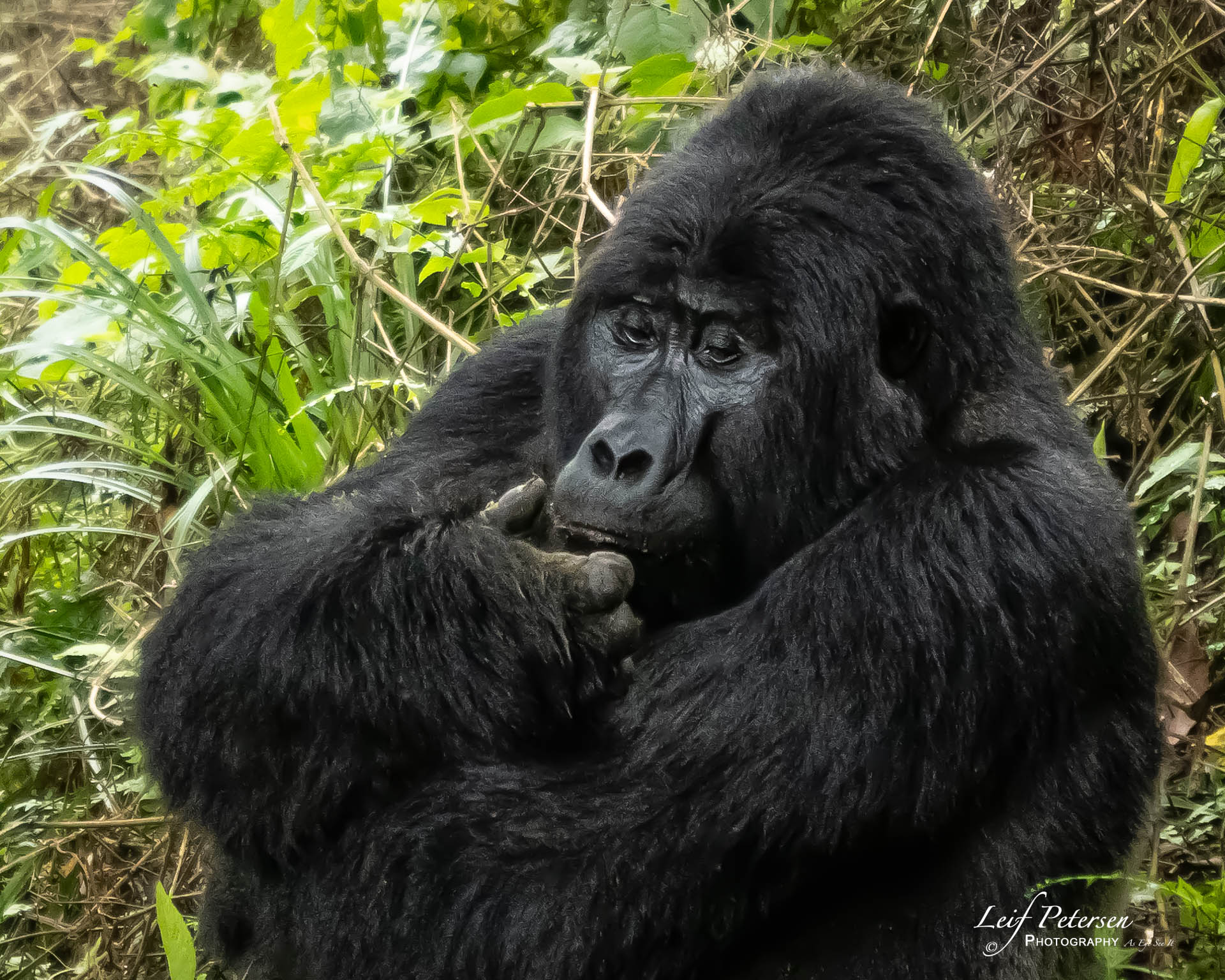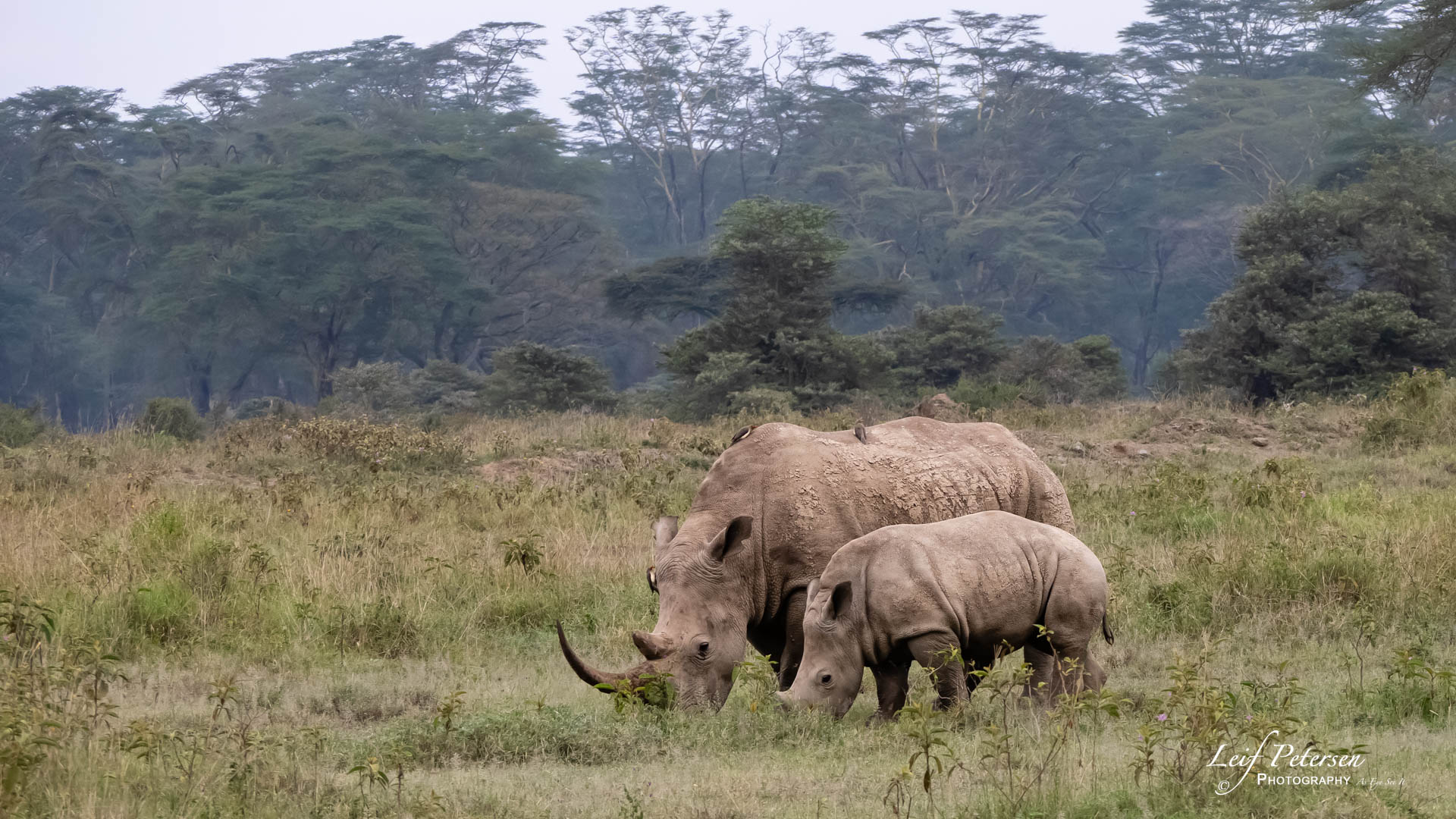"Shoot for yourself, be creative, and break the rules" – an interview with Leif Petersen
"Just shoot what you enjoy shooting" says LUMIX Ambassador Leif Petersen, who has shot on all 7 continents over 42 years

All brand ambassadors are great photographers, but not all brand ambassadors have seen so much change in the industry, going back four decades and numerous technological revolutions.
We were privileged to chat with LUMIX Ambassador Leif Petersen, who has not only been shooting for over 40 years but has also been invested in the photographic community, printing, educating and judging.
Deeply involved in the Ontario, Canada photo community, he heads an organization that represents 37 camera clubs – and is involved with a group in Toronto that has been running since 1939.
Leif chatted with us about his history with photography, the innovations he's seen come and go, his career as a LUMIX shooter, and his experience using the Panasonic LUMIX G9II on location in Africa.

For those who might not be familiar with your work, tell us a little about yourself.
First of all I guess I would say I'm a proud Canadian-Norweigian, having come here many years ago. I'm a husband and a father, a grandfather, I'm a photographer, traveller – I've traveled to all seven continents, a lot of it while I was in my career. Presenter – I do lots of presentations, I'm very involved in the Ontario photography community in Canada. I print a lot of work for myself and others, I lead workshops and I lead photo tours. I enjoy sharing my photography and mentoring when I can.
I bought my first camera I think in 1982, so I'm coming up to about 42 years. I can't even remember what kind of camera it was, but it was totally manual. I shoot pretty much all subjects except for formal portraits and weddings – you couldn't pay me enough to do a wedding! My travels have had me shooting more landscapes and seascapes, but I enjoy shooting architecture, nature, some wildlife, informal street photography, street portraits, macro – really whatever is around me at the time.
You've traveled extensively, and you live in a beautiful part of the world – where would you rank the places you've shot, including Canada?
Well, as far as Canada goes, it's an awesome country to shoot in. There's so much diversity across the country, right from Newfoundland in the east and through the other Atlantic provinces, Quebec and Ontario have lots, and right through the west coast, so it's a great place to shoot in – I've done a fair bit. But I've probably done more shooting in other countries.
I'm a little biased towards Norway because I do lead photo tours over there, so that's a favorite place. And India – I have really enjoyed shooting in India. There it's a lot of architecture, a lot of old architecture, and the street photography and people photography is very rich as well.

You mentioned getting your first camera in 1982, and since then there have been all kinds of innovations – from the art to the science, to the technology and the democratization. What are the things that have changed the most?
Certainly the biggest change science-wise is moving from film to digital – I mean that just changed the world. Certainly one of the things you mentioned there, the demographics have changed a lot, I believe. And the introduction of mirrorless has certainly changed things too.
I guess the technology advancements have been really rapid the last few years, and probably the biggest or one of the biggest is cell phones. Everybody's carrying a camera. And even there, the technology has changed so much. A lot of people are saying why the hell do I need a camera, a bigger camera – I can stick this in my pocket, it's just fine.
I think in terms of art, certainly photography has been considered art forever, but I think that's been more in photographic circles – more recently I'd say maybe, I don't know, the last 10, 20 years, it's become more generally accepted as art. Some painters certainly consider themselves the only artists in the world, but I think there are a lot who accept photography as an art more generally now.

Speaking of art, you mentioned printing – which is literally becoming a lost art these days for a lot of photographers. A lot has changed from the days where, "it's not a photograph until it's printed."
Right, exactly, yeah. I've been involved in printing for a number of years, and I really enjoy it – I enjoy the process right from taking the photograph to printing it, to mounting it, to hanging it in an exhibition. But even our club, in Oshawa, who's been big on printing for many years, they've just said we're not doing that any more.
And it's really unfortunate, myself and a few people tried to fight that trend, but it didn't really get us anywhere. It's really too bad. I think the cell phone generation now kind of live in 10- to 20-second intervals. And if you can show it on your phone or iPad or whatever, that's great – otherwise forget it.

Printing is one of those areas where Micro Four Thirds is commonly criticized, with people insisting that smaller sensors aren't capable of decent prints. In your experience have you found that to be true?
Oh absolutely not. I've made many prints at 30 x 45 inches from my Micro Four Thirds cameras – and that's not a problem. A lot of what I print is 12 x 18, I'm talking inches here – I'm old school, I haven't quite got around to metric when it comes to measurements! But no, that's not a problem whatsoever. Not at all. And part of that I guess, to be fair is, the post-processing program technology has come a long way as well, with improvements in things like sharpness and noise reduction.
Do you remember your first exposure to Panasonic / LUMIX as a brand in photography?
Yeah, I shot with Minolta until they went away, and then Canon for a lot of years. A friend of mine had bought a GH4 – he is definitely a DSLR shooter, so I was surprised when he got a mirrorless.
I tried it out with a few shots and I liked it, and soon after that I bought a GH4 with a few lenses. Later on that year when my wife and I took a drive out to the west coast of Canada, I wasn't quite ready to give up the DSLR so I took my two bodies with me as well as the GH4. I continued shooting with both systems probably for six months or so – but by that time I was ready to switch and got rid of all the Canon gear.
I upgraded at some point to a GH5, then added a G8, and I eventually switched to using two G9s and that's what I'm using now. And now I'm looking at getting a G9II. So that was my first exposure to it, and I never looked back.

What was your impression of other features of the G9II camera?
After taking some time to familiarize myself with the camera's menu system and getting used to the changes vs the G9 prior to the trip to Africa, I was ready to shoot. I thought I might miss not having the top screen, but everything is right there on the dials so, in a sense, it's a simple layout and easy to work with. As with all of the LUMIX cameras I've shot with, the menu system is intuitive and easy to work with.
I'm impressed with everything about the camera. The 8-stop stabilization is great for me. I shot at some high ISO's while in Africa and since, in some very low light situations. Any noise is easily handled in post. Just recently, I was involved in some night shooting and tried handholding for up to five seconds, which tested both the noise and stabilization. I was very pleased with the results.
I didn't shoot a lot of video in Africa, but I was very impressed with what I did and I was able to pull out some great individual frames. Again, the stabilization was a bonus as was the dynamic range. I had many occasions to shoot in Burst Mode 1 and I came away from those opportunities feeling like I didn't miss the shot I wanted. The only challenge is that I shot too many frames and now I have to sort through them all.
The Phase Hybrid AF is fantastic. Locking in on an animal's eyes is fast and accurate, even in some questionable situations, for instance, shooting a leopard in tall grass. A fast-moving target was no problem either. Matching that with the 100-400mm lens makes for a powerful combination for nature photography.



What's your go-to lens? If you can only take one or two?
Probably the 12-60mm, I use that lens a lot. If I'm leading a tour in Norway, for instance, and we're out shooting landscapes and seascapes, that's what I'll use. I've got the two G9s so I'll have the 100-400mm on one, the 12-60mm or the 8-18mm on the other one.
When I was in Africa and using the G9II, for the most part I had the 100-400mm on that, and I put the 12-60mm on one of my G9 bodies. And in some cases we were close enough to the animals that I didn't need a long lens – I could use a 12-60mm for shooting a gorilla or a chimp.
Shooting gorillas on a 12-60mm is pretty brave!
Well it was quite something! Not at any time did we feel that we were in danger anywhere, but a gorilla did grab one guy's foot, but the tracker banged the ground with a stick and the gorilla let go. No big deal!

It's hard to pick a favorite photograph, but if you had your three best images – what were they and why were they important to you?
I've got two or three there that are like old friends. They were my favorites, and I've sold a number of them. One was in New York City, a silhouette of people sitting on a bench in front of the lit-up waterfall. I enjoy that photo a lot. The other one was at a place called the Dark Hedges in Ireland. Those two were shot with a DSLR.
I definitely have a few with LUMIX. There was one I took, stopped along the side of the road. I pulled over to get a shot of a farm reflected in a lake with a mountain background, and then these clouds rolled in. I called that one Heavenly Reflection because the clouds were reflected in the lake as well. I remember driving away from getting that shot thinking, "If I don't get another one this trip, I'm okay with that. I've got this one."

There's another one from a beach, in Norway, it was coming up to about eight o'clock at night. There was a sunset in the water, just at the horizon, there the mountains were silhouetted, and then the Aurora Borealis came through. I got a shot of an Aurora streamer coming through, the red sunset and the reflection in the water. That's a favorite.
And I've got one I took in the Antarctic of a couple of penguins who looked like they were holding hands; their flippers were close together. There's another penguin standing a little bit away looking at them, and I called that one Get a Room! So it was just one of those fun shots.
Finally, can you give a piece of advice to your younger self, or to someone asking, "I've just got this camera, what should I do with it?"
Well if it was advice to me, I would say start earlier and get a career in photography! That kind of advice wouldn't have come along until I knew I really enjoyed it. But it's pretty hard to make a living through photography these days, compared to what it used to be. More importantly, I would say just keep shooting, keep exploring, and keep learning.
I think the biggest one would be shoot for yourself, be creative, break the rules, and just shoot what you enjoy shooting. In the camera club world, and when you're entering competitions, you're shooting for judges. And I'm a judge. And I would still say, even being a judge and judging competitions, if somebody breaks the rules – all the better. So that would be the big one: shoot for yourself, be creative, and break the rules.

To learn more about the LUMIX G9II visit the official Panasonic product page.
Get the Digital Camera World Newsletter
The best camera deals, reviews, product advice, and unmissable photography news, direct to your inbox!
Digital Camera World is one of the leading authorities on camera and photography news, reviews, techniques, tutorials, comparisons, deals and industry analysis. The site doesn't just specialize in cameras, but all aspects of photography, videography and imaging – including camera phones, gimbals, lenses, lighting, editing software, filters, tripods, laptops, printers, photo books, desks, binoculars and more.
Whether you're using, looking to buy or trying to get the most out of a compact camera, action camera, camera drone, cinema camera, beginner camera or professional camera, Digital Camera World has a roster of experts with combined experience of over 100 years when it comes to cameras, photography and imaging.

